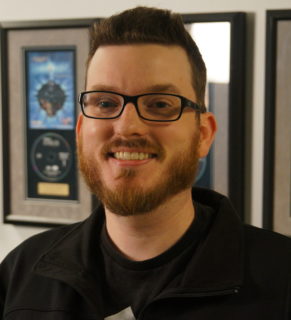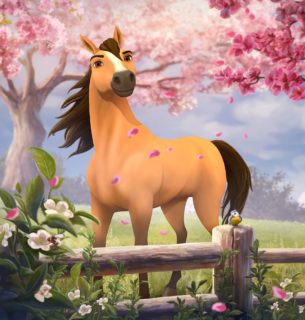At the Dell EMC World event in Las Vegas this week, the technology company had an entire area inside The Sands Convention Center dedicated to video games, virtual reality and drone racing. Attendees were able to play Oculus Rift titles like Epic Games’ Robo Recall, HTC Vive games in front of a giant green screen so spectators could see players in the VR experience and PC and VR games connected to an Alienware gaming truck. There was also an entire dome dedicated to DR1 Racing, complete with professional drone pilots on hand to train attendees how to steer the tiny micro series drones through a Gotham City-inspired course filled with skyscrapers.
Joshua Bernstein, vice president of technology for Dell EMC, is the mastermind behind the emerging technology section of the massive Dell EMC World event, which all ties into the CODE program at the giant technology company.

“CODE is a group of passionate engineers that are dedicated to making Dell relevant in the open source community,” Bernstein explained. “We contribute to open source projects that we enjoy and that we find are popular, we support our own projects and we generally create awareness about open source with our customers inside of Dell and around the community.”
In addition to coding, the former Apple engineer, who helped create Siri, spends a lot of time flying drones. He owns 15 quads and understands the thrill of racing a drone of any size through a professional course. So, bringing DR1 Racing into Dell EMC World was a no-brainer.
“I’m a big drone racer myself,” Bernstein said. “What makes drones interesting as a sport and as a hobby is that you can’t just be athletic. I’m not very athletic, but you have to have two key talents. You have to be a good pilot and you have to practice. But the whole sport rose out of the availability of open source software, so you have to be able to consume open source software and be a part of the community in order to be an effective drone racer. You have to utilize social media. You have to read forums. You have to understand open source software. That’s the relevance between CODE and drone racing.”
DR1 Racing is the largest drone racing company in the world today, with a global television distribution network and three tiers of racing. The Micro Series drone racing is currently the most popular, as well as the easiest entry point for new pilots. The Tiny Whoop drones, which fit in the palm of your hand, are both lightweight and versatile, and they cost a fraction of the larger quadcopter drones that are used in the Champions Series.
“I love these Tiny Whoops,” Bernstein said. “I spend more time racing these around the office when I’m there. I’m traveling more than I am flying these days, so being able to take the Tiny Whoop with me on the airplane all over the globe and zip it around airports and hotel rooms is just great.”
Bernstein sees DR1 Racing has the potential to do for drones what Formula 1 did for the auto industry.
“Number one, it’s about brand recognition,” Bernstein explained. “But really, it’s about where all the research and development come into play that support a broader industry. Goldman Sachs said that drones were going to become a $4 billion industry four years from now. If you think about the more commercial aspects of drones in roof surveying, crop surveying, first responders, and all these business-oriented ideas, all of that technology comes out of drone racing and comes out of this community. That’s why it’s going to be a big deal.”
DR1 Racing was the first league to get drone racing on TV through a branded race with Mountain Dew and Dorito’s on Science Channel. The company has also used Twitch to connect with the younger fan base. But now DR1 Racing has built a global distribution network to bring the sport to the masses with partners like Europsport across multiple levels of professional competition.
“The spectator potential is tremendous,” Bernstein said. “Just like how people love NASCAR, love Formula 1 and love that technology, the ability of DR1 to present it in a way that’s consumable to the average viewer is really powerful. It’s one thing to go to a park and watch these drones zip around at 80 miles an hour outside, but to see these drones on movie sets and environments that you identify with and be able to witness it and be able to follow the racing is incredibly powerful. It has to be consumable, and I think DR1 has done a great job of that.”
The Gotham City-inspired set inside the Dell EMC World convention tied into the Dark IT Knight theme of this year’s event. Bernstein said the immediate feedback from the thousands of attendees this annual event attracts from around the globe was overwhelmingly positive.
“Customers I’ve spoken with have told me what a memorable experience this is and how different and unique it is,” Bernstein said. “To be able to provide it here in a consumable way for people to appreciate and be a part of makes it even more emotional when they get to watch it on TV and appreciate it. And unlike Formula 1, where not many of us are going to get to zip around a track in a Formula 1 car and have that experience, drone racing is unique in that anybody can experience it very easily. That’s what makes it powerful as a sport in the future.”


 How did the partnership with DreamWorks come together?
How did the partnership with DreamWorks come together?
